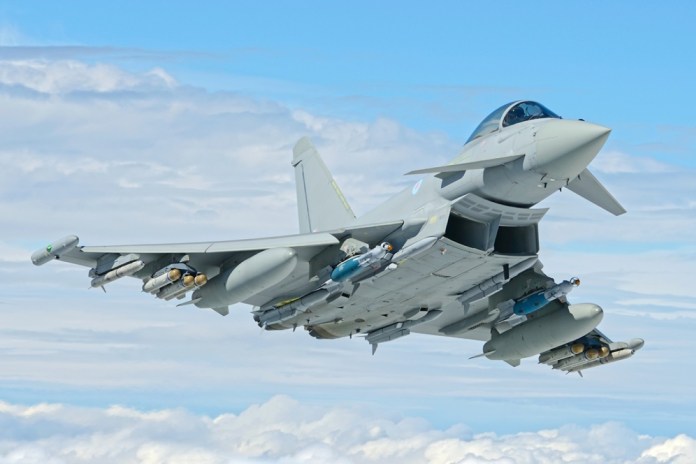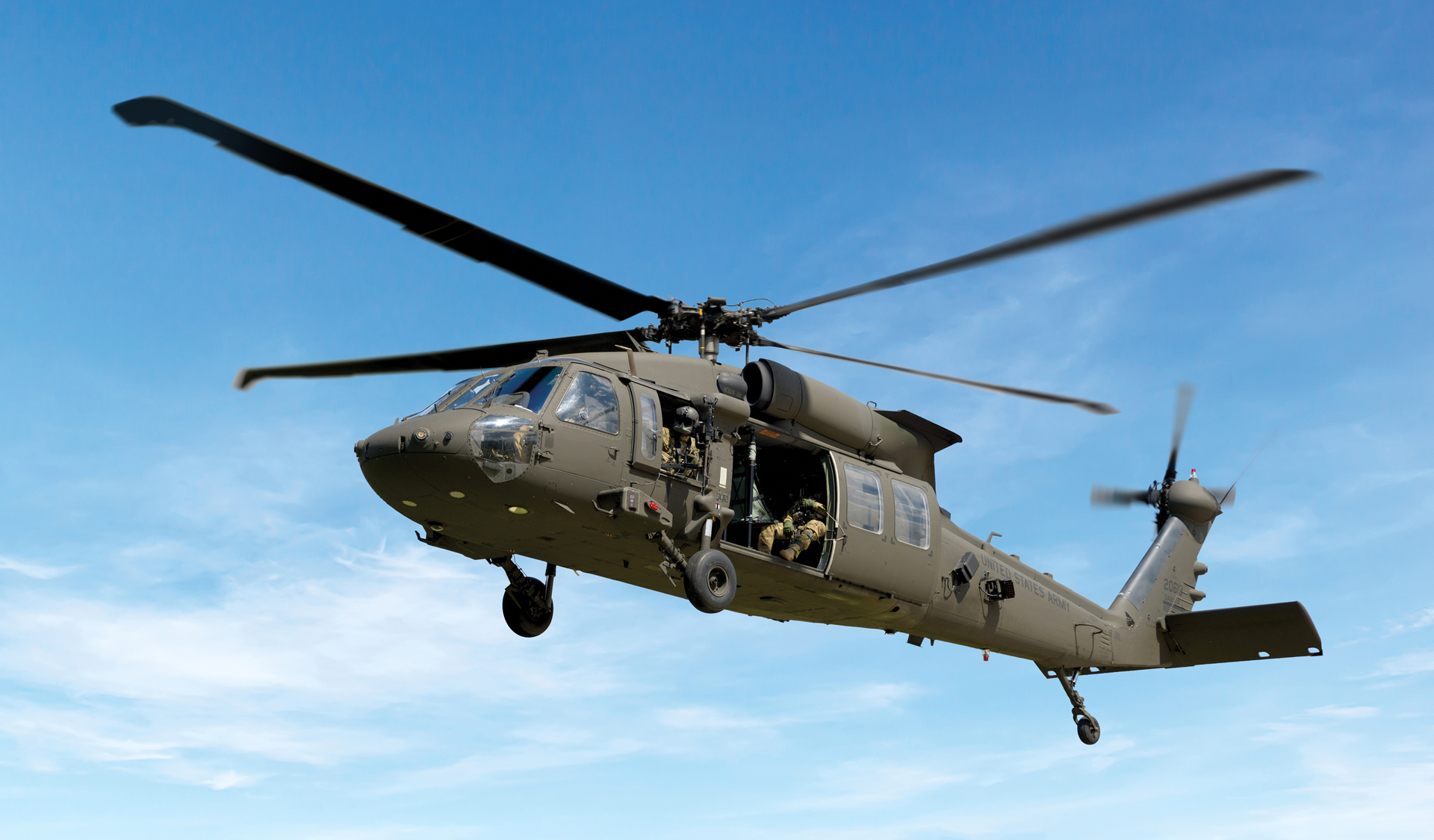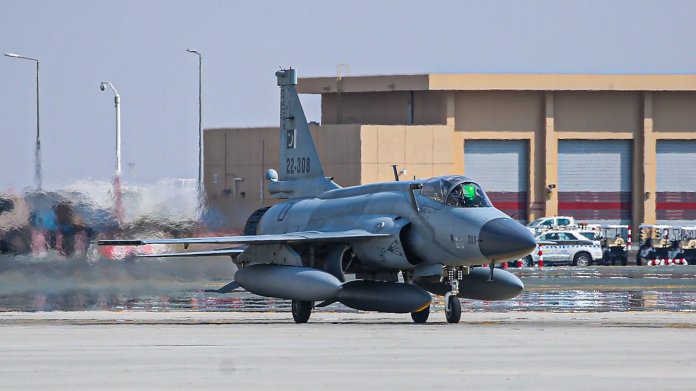PARIS - France is offering the Heron TP as its contribution in kind to the NATO Alliance Ground Surveillance program, but technical and financial problems related to adapting the medium-altitude, long-endurance (MALE) UAV to French standards are holding up a deal with Dassault and Israel Aerospace Industries (IAI), industrial and political sources said.

DASSAULT IS NEGOTIATING with Israel Aerospace Industries on the contract for the Heron TP, which the French company would then deliver to French authorities. (Israel Aerospace Industries)
French Defense Minister Gerard Longuet told the French aerospace journalists' press club that the deal would be sealed by "the end of 2012."
Dassault is negotiating with IAI on the contract for the Heron TP, which the French company would then deliver to French authorities.That's later than expected by industry and parliamentary sources, who had thought the controversial contract would be signed before the presidential elections starting in April.
"There are many difficulties" on adapting the Heron TP, driving the cost above the 320 million euro ($408 million) budget, a parliamentary source said. An extra 150 million euros each for Dassault and Thales has been estimated for the modifications, the source said.
That would push the cost to 620 million euros, approaching the 700 million euro price tag of a previous Dassault offer of the Système de Drone MALE.
The Defense Ministry has asked Dassault to submit a technical-financial proposal on the Heron TP at the end of the month.
Among the key modifications are a satellite communications link and de-icing equipment, vital to plugging the UAV into the French - and NATO - network and fly in the northern European climate, the industry executive said.
Procurement officials are working hard to make progress on the UAV case, and one option might be to acquire the Heron TP with little or no modification, the executive said.
That might create problems of interoperability within NATO as Paris has offered the Heron TP as its asset contribution, instead of paying cash, toward maintaining the AGS system, the executive said.
Although 13 nations are acquiring AGS, based on the Northrop Grumman Global Hawk UAV, all 28 alliance members help maintain the system in return for access to AGS information.
"The AGS package is still being discussed at NATO," an alliance press officer said. "It is a topic to be discussed in the February meeting of defense ministers."
NATO has long sought to launch the AGS program, intended to provide commanders with a common operational picture.
France has had a troubled relationship with AGS, as Paris looked to gain a big technological role. The planned AGS system relies on five Global Hawks to provide radar and optical pictures of conditions the ground, and a network of transportable ground stations. The UAVs will be based at Sigonella airbase, Italy.
The choice of the Heron TP sparked resistance in the French Senate, which argued for acquisition of General Atomics' Reaper on grounds of cost, performance and interoperability with allied forces.
Longuet defended the choice of the Israeli UAV as "a compromise between capability and a long-term interest for industrial policy," he told the press club.
"We could have found a cheaper, more efficient, quicker solution, but at the [unacceptable] price of long-term dependence," he said.
Longuet denied that most of the contract value would go to IAI, saying that air vehicle is the smallest part of the system, with communication and observation more important.
The government argues that adapting the Heron TP to French needs will help develop competences among about 10 domestic companies in high-value areas, particularly in communications. Critics of the choice say there would be more work for French companies on the Reaper, pitched by EADS and General Atomics.
"No proposition was made by Reaper, which did not want to share, nor to adapt to French standards," Longuet said.
General Atomics did not make a formal offer because France did not send a letter of request, an industry executive said.
In 2010, the U.S. company signed a technical-assistance agreement with EADS detailing its offer, the executive said. The agreement listed modifications, including a communications link developed by French equipment firm Zodiac for the Harfang UAV flying in Afghanistan.
General Atomics also wrote in June 2011 to French Sens. Jacques Gautier and Daniel Reiner, setting out a $209 million offer for seven air vehicles, ground gear and service support.
The government, however, sees Dassault as holding a key position on a strategic roadmap intended to ensure interoperability in observation, surveillance, targeting and air power. That position stems from its work on the Rafale and Anglo-French cooperation, in the government's view.
Longuet said risk-reduction work on the Heron TP would start in 2013.
Dassault and DGA were unavailable for comment.
On a proposed new MALE UAV to be developed with Britain, Longuet urged a pan-European rather than a strictly bilateral approach.
The project "should accept the construction of Europe," he said. "We can't ignore countries with industrial capabilities. We'll probably have an Anglo-French project, which cannot avoid opening to other European partners."
On the Anglo-French cooperation treaty, Longuet said, a new date for a summit meeting would be set for before his birthday on Feb. 24.
"There are no doubts on defense," he said on relations between London and Paris.
EADS and Finmeccanica signed a deal in December to team on UAV development, reflecting wider discontent in Italy and Germany over the Anglo-French defense accord.
France would not develop the EADS Talarion Advanced UAV, Longuet said.
One way of bringing a European dimension into the planned Anglo-French MALE UAV would be to integrate it into the European combat aircraft environment, dominated by the Eurofighter Typhoon and Rafale aircraft, Longuet said.
"If we're intelligent, we should say, 'You British work on Eurofighter with Germany, Italy and Spain, and we'll work on Rafale,'" he said. "It would be good if the MALE UAV were to be compatible with one and the other."
OTHER PROGRAMS
France will buy the A330 Multi-Role Tanker Transport (MRTT) from Airbus "in 2013 for delivery four years later," Longuet said, leaving Boeing out in the cold.
Longuet dismissed previous official denials that Airbus had been chosen as "semantic elegance."
The U.S. Air Force's $35 billion pick of Boeing over Airbus for its KC-X tender effectively shut the door on a French tender.
France is expected to order five to seven A330 MRTT units in a first-batch order that could total 14.
Paris had been considering leasing part of Britain's A330 tanker fleet, but the Libyan air campaign led French authorities to decide they wanted their own aircraft.
On domestic consolidation, Thales would likely take a 10 percent to 20 percent stake in Nexter in exchange for handing over its TDA Armements mortar and munitions business to the land systems specialist, Longuet said.
Thales' holding would be significant but would not leave Nexter "dependent," he said.
Answering a question on anxiety at DCNS, where Thales is raising its stake in the naval company to 35 percent from 25 percent, Longuet said, "Thales is not the obligatory supplier of systems. DCNS can choose its systems."
DCNS makes naval combat management systems, and executives fear Thales will impose its own products, relegating the company to being a platform maker.
Nexter and DCNS had to forge European alliances to compete with companies from emerging economies such as Brazil, but first they had to consolidate their domestic base, Longuet said. Nexter had to look to German partners, as that was where the land sector was strong, he said.
Asked about the health of French defense companies, Longuet said, "Thales is a company necessarily in more peril because it is innovative on creative subjects on a world scale. It is more difficult. It has to take risks and goes through periods of uncertainty."
Regarding arms exports, the 2011 total for France would be around 6.5 billion euros, helped by an Indian contract for modernization of its Mirage 2000 fighters, Longuet said. That compared with 5.12 billion in 2010.
In October, procurement chief Laurent Collet-Billon had told lawmakers in October he expected 2011 export sales to reach 7.5 billion euros.
On export prospects for the Rafale, Longuet said a UAE decision to pick the Rafale would help sell the fighter to Kuwait and Qatar, which want to be interoperable with their neighbor's Air Force.
"They are interested" but would not be the first to commit, he said. "If they think no decision is being made [by UAE], they will look elsewhere."
Kuwait is looking at acquiring 18 to 22 jet fighters, with Qatar potentially 24, industry executives said, according to La Tribune.
The Defense Ministry appeared to harbor worries about Qatar raising its stake in Lagardère, the family-controlled company which owns 7.5 percent of EADS.
"There are fewer problems in football than in military aeronautics," Longuet said. "It's a subject."
But the decision on Qatar's shareholding in Lagardère was up to the Finance Ministry, not the Defense Ministry, he said.
A Qatari sovereign fund holds 10.07 percent of Lagardère stock, making it the largest single stockholder in the French company, and has asked for a seat on the board. Qatar bought 70 percent of the Paris Saint Germain football club for 30 million euros in May.
Julian Hale in Brussels and Tom Kington in Rome contributed to this report.


